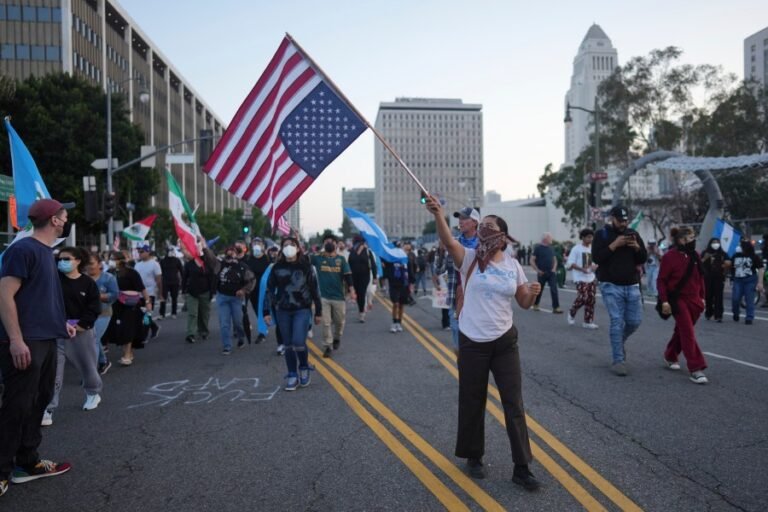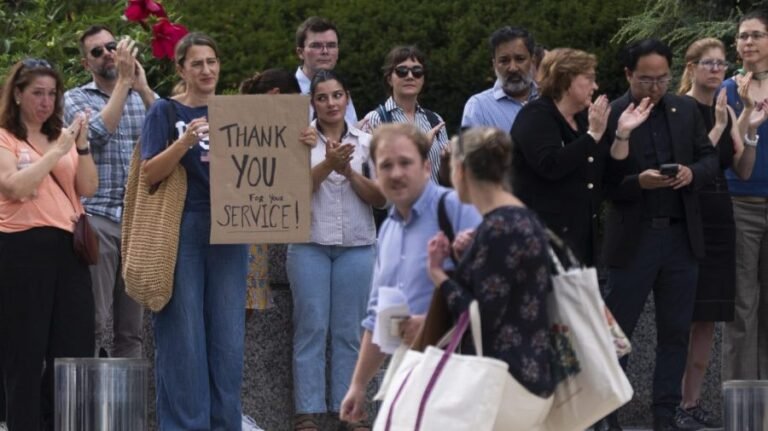
President Trump’s push for a ceasefire in Gaza is testing his bond with Israeli Prime Minister Benjamin Netanyahu, which was on full display this week during the Israeli leader’s third visit to Washington this year.
Even when Trump and Netanyahu have diverged in private, they have usually remained publicly in lockstep — apart from Trump dropping an f-bomb last month during the shaky start of the Israel-Iran ceasefire.
As Trump turns his attention to ending the fighting in Gaza, Netanyahu risks drawing the president’s ire once again.
“The president gets frustrated because he wants this victory of having brought peace,” said Elliott Abrams, U.S. special representative for Iran during Trump’s first term.
“I think when it comes to Gaza, he recognizes that the problem is Hamas. So it’s frustrating to him that he can’t get the hostages out and get a ceasefire, but he’s not blaming Netanyahu.”
Trump and his top envoy to the Middle East, Steve Witkoff, say a deal is close.
“There’s nothing definite about war, Gaza and all the other places, there’s a very good chance of settlement, an agreement this week, maybe next week if not,” Trump told reporters on Wednesday when asked about the progress of his talks with Netanyahu.
Witkoff said Tuesday the two sides were now in “proximity talks,” having whittled their disagreements down to one point. A Palestinian source told the BBC that talks in Doha have stalled over disagreements on the delivery of humanitarian aid and Israeli military withdrawal.
It’s not clear whether Trump will respect Netanyahu’s red lines — getting Hamas out of Gaza and Israel retaining freedom of military operation — or push the Israeli leader to accept a deal that would infuriate his right-wing allies and risk toppling his governing coalition.
Trump has repeatedly broken with Netanyahu’s desires in the Middle East, as demonstrated by his dropping sanctions on Syria’s new government and engaging in direct talks with Iran. Yet this week the president was notably deferential to his Israeli counterpart on questions about the future of Gaza.
“Trump is the only U.S. president who in his first 6 months has both sidelined Israel and made it central to his successes and policies,” Aaron David Miller, a veteran Middle East negotiator and senior fellow at the Carnegie Endowment for International Peace, wrote Monday on the social platform X.
“The Trump-Netanyahu bromance will last until it doesn’t.”
Between the Monday and Tuesday meetings, both leaders expressed optimism about the end to the fighting between Israel and Hamas.
The deal on the table is set to include a 60-day truce, with Hamas to release 10 living hostages and nine bodies over the course of the two months. Israel would release Palestinian prisoners in Israeli jails and allow for the scale-up of humanitarian aid.
What Trump and his aides have not addressed in public are the more complicated issues, like whether the truce will lead to an end to the war and what governance of the Gaza Strip will look like moving forward. Trump said in February, alongside Netanyahu, that the “U.S. will take over the Gaza Strip,” a suggestion that drew immediate backlash across the region.
Netanyahu has called for the complete defeat of Hamas since the U.S.-designated terrorist group launched its Oct. 7, 2023, attack against Israel, where they killed about 1,200 people and took 251 hostages. Israel’s subsequent war against Hamas in Gaza has killed nearly 60,000 Palestinians — a figure that includes Hamas fighters — and imposed a devastating humanitarian crisis in the Gaza Strip.
In January, Trump helped push over the finish line a two-month ceasefire that fell apart in March over efforts to negotiate an end to the war.
Netanyahu, speaking to reporters on Capitol Hill earlier on Tuesday, voiced optimism about the latest Gaza ceasefire proposals endorsed by the U.S.
“We accepted a proposal that came from the mediators, it’s a good proposal, it matches Steve Witkoff’s original idea, we think we’ve gotten closer to it,” Netanyahu said.
“I hope we can cross the line, that is our purpose. The less I speak about it publicly the more likely we might get it.”
John Hannah, senior fellow with the Jewish Institute for National Security of America, noted that Netanyahu endorsed Trump’s earlier plan to try to relocate Palestinians out of Gaza and suggested the U.S. and Israel were working with other countries to see who could absorb this population.
“That seems to be back in play as part of any potential end to this war, which I thought was an interesting detail,” he said.
Hannah also noted Trump’s deference to Netanyahu when asked about a potential Palestinian state — which Netanyahu described as an administrative region where Israel maintains security control. That vision clashes with the demands of Arab states and some European partners.
“We’ll just have to see how that affects Arab calculations,” Hannah said. “I’ll be looking in the days and weeks to come for more detail on background on what actually happened in the prime minister’s discussions over the course of this week.”
Hannah said the “atmospherics” of unity between Trump and Netanyahu marked a significant shift from the president cursing Israel and Iran last month.
Trump exited the White House early that morning and told reporters that both sides “don’t know what the f‑‑‑ they’re doing.” He then spoke with Netanyahu, which led Israel to call back planes headed for Iran.
Abrams said the public rift ultimately showed the durability of the Trump-Netanyahu bond.
“If this is a relationship in which they can be angry with each other and then restore things quickly, that suggests to me that it’s a pretty reliable relationship. You don’t see him doing that with the Canadians, the Japanese, the British, because it’s a more distant relationship,” Abrams said.
“This one seems to be closer and more personal.”






